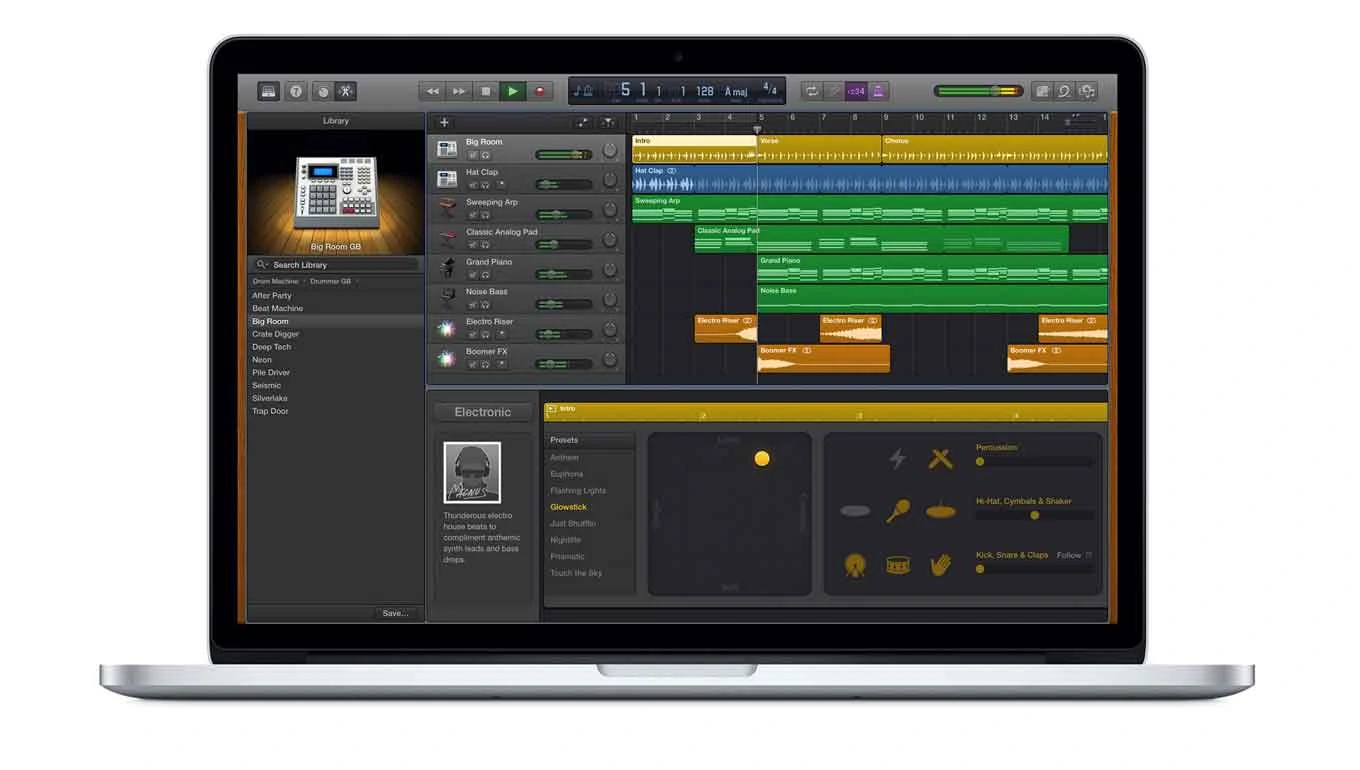Garageband puts music production at your fingertips, allowing you to create high-quality recordings from the comfort of your own home. Its modern and intuitive design makes it easy to let your creativity shine, but there’s just one problem, figuring out how to remove the echo. Removing echo is easily done by changing the Master Echo setting in the Smart Controls menu bar. But what does echo do, and why would you want to remove it?
Related: The 11 Best Podcast Editing Software For a Perfect Show
Contents
What Is Echo?
Echo, also called delay, is an effect used to record audio signals for playback following the original signal. The use of echo is very common in many audio recordings and is often a basis for a variety of other effects, including reverb and chorus. Two genres where echo is used a lot are reggae and dub, but it’s also popular as a way to help compliment a performance, particularly with vocals or guitar. Although there are many people who enjoy using echo in their recordings, there are many who, for varying reasons, would prefer to turn it off. However, this process is challenging for those using Garageband since the option is relatively hidden.
Related: How To Reduce Echo In A Room
How To Remove Echo In Garageband On Mac

Garageband. Image source.
If you’re using a Mac, removing the echo in Garageband is pretty straightforward and begins by changing the Master Echo setting by clicking the “Master” tab located on the Smart Controls bar menu. Once you see the drop-down list, select “Effects” and select either Master Reverb or Master Echo on the upper area of the menu that pops up, you can also select a master effect setting on the Setting button in the lower menu.
If you want to stop echo noise reduction, it is a three-step process as follows.
- Follow the normal procedures for selecting your background noise and sampling the audio (shift + P)
- Select all your audio (CTRL + A)
- To apply noise reduction click: Effect > Noise Restoration/ Reduction > Noise Reduction (process) or CTRL + shift + P
What’s The Difference Between Echo And Reverb?
Echo and reverb are often used as synonyms because they create similar effects; however, they aren’t the exact same thing. Echo occurs when a sound pulse is heard twice, generally with a delay of around 50ms between the when the first and second sound reaches your ear. Due to the delay, the brain registers the sounds as different events instead of occurring from the same originator.
Reverb or reverberation occurs when a sound persists after the source has stopped. As a reaction to the high number of sound waves being reflected, the brain registers it as one continuous sound.
Can I Add Echo Again After I Removed It?
If you’ve removed echo from Garageband and decided you want to add it again, it only takes a few steps to re-activate it.
- Open the Garageband app on your Mac
- Select a preset loop or the track you’re currently editing
- On the bottom right of the screen, select the “i” (info) button, which will open the info on the selected track
- Once open on the “Browse” tab, change to “Edit“
- On the bottom left side of the editing window, you’ll notice the “Master Echo” controller
- You will now see a blue button indicating it’s on, along with a slider with numbers 0 to 100
- Using the slider, choose the amount of echo you want to be added to your track
- Return to your track and press “Play”
Anytime you wish to adjust the echo on a specific track, you can follow this method to either turn it up or down, creating a customized effect on every recording.
Related Questions
Are There Echo Plug-Ins I Can Use?
There are many echo plug-ins available on the internet that allow you to customize the amount of echo for each individual track. These plug-ins work with Garageband and install quickly in minutes.
Is Garageband Available On Windows?
No, currently, Garageband is not available on Windows, only on Mac.
Is Garageband Free?
The Garageband app is free to download onto your Mac. There are basic features available with the free version, but to get the most out of your recordings using the Garageband premium, which costs about $200, is money well spent.
Summary
Whether your focus is on vocals, instrumentals, or a mix of the two, having the option to remove echo is always good to keep in your back pocket! Removing echo in Garageband is a simple process, only requiring a few easy to follow steps. Once removed, it’s possible to switch it back on again, making the Garageband app an excellent option for many types of recordings. If you’re using Audacity to remove echo in your recording, we’ve also got you covered.